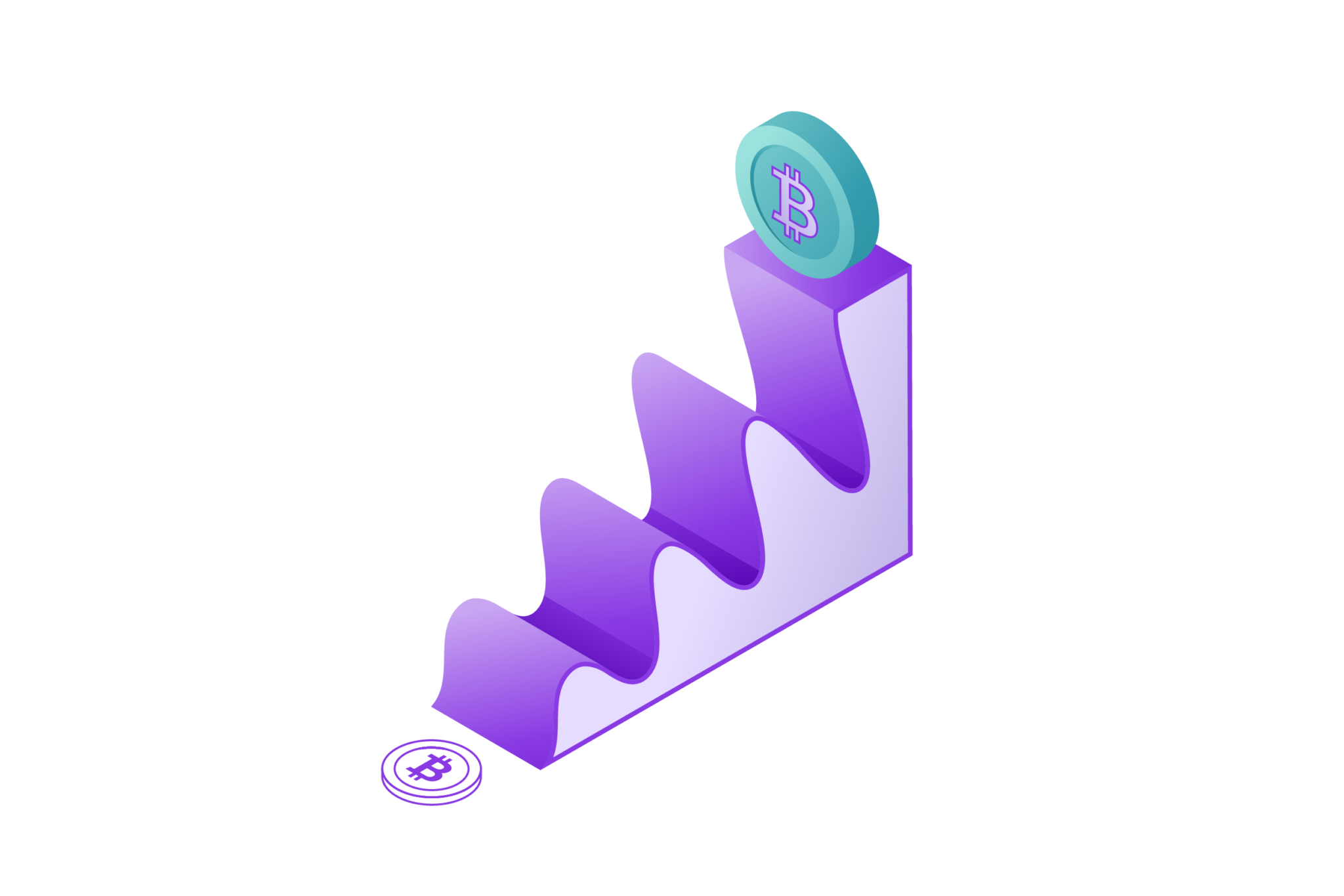
The world of cryptocurrencies has taken the financial markets by storm in recent years. These digital assets have not only disrupted traditional finance but have also given rise to new opportunities and challenges. One crucial aspect of the cryptocurrency ecosystem is crypto market making, a practice that plays a pivotal role in ensuring liquidity and stability in these volatile markets. In this article, we will delve into the world of crypto market making and the broader crypto landscape.
Also Read: Market Maker Options: Definition and How They Make Money
What is Crypto Market Making?

Crypto market making is a trading approach practiced by individuals or entities referred to as market makers. Within the realm of cryptocurrencies, this strategy revolves around the facilitation of digital asset trading by consistently providing buy and sell prices on both sides of the order book. The fundamental aim of market makers is to generate profit from the spread, which signifies the disparity between the bid (the purchasing price) and the ask (the selling price) of a particular asset.
These market-making strategies are frequently deployed to enhance the liquidity of digital assets, thus attracting participants looking to buy or sell on cryptocurrency exchanges. The process commences with the submission of the highest bid and the lowest ask for a given digital asset in a crypto market.
This method of crypto market making serves the critical purpose of congregating buyers and sellers onto a unified platform for the execution of sales, purchases, and various types of digital asset trading within the cryptocurrency market. The prosperity of any market is heavily contingent on its liquidity. A liquid token garners a sufficient number of buyers and can be traded with ease without causing substantial price fluctuations. Consequently, crypto market making, as in liquidity, plays a pivotal role in the cryptocurrency market.
Market-making strategies are strategically employed to infuse liquidity into digital assets and entice buyers and sellers to engage with crypto trading platforms or exchanges. The initial step entails the submission of both the highest bid and the lowest ask for a digital asset within a crypto market. The variance between the highest bid and the lowest ask, often referred to as the ‘spread,’ is a hallmark of liquid markets. Crypto market making, without the presence of market makers, markets tend to become less active. Market makers actively place orders to secure profits, narrow the spread, and sustain the essential liquidity needed for efficient trading.
The Significance of Crypto Market Making

Market making is instrumental in maintaining the orderly functioning of cryptocurrency markets. It ensures that these markets are not only accessible but also stable and attractive to a wide range of participants, from individual traders to institutional investors. The significance of crypto market making is multifaceted and plays a vital role in shaping the dynamics of digital asset markets. Here are the key aspects of its significance:
Liquidity Provision
Market makers are akin to the lifeblood of cryptocurrency markets. Crypto market making will continually provide buy and sell orders, ensuring there are readily available trading opportunities.
This process guarantees that traders and investors can easily enter or exit positions without significantly impacting the market price. Without market makers, markets can become illiquid, causing wild price swings and making it challenging to execute trades at desired prices.
Price Stability
Cryptocurrency markets are notorious for their price volatility. Market makers actively work to stabilize prices by narrowing the bid-ask spread. By doing so, they reduce the price discrepancies between buy and sell orders, making the market less prone to abrupt price fluctuations. Crypto market making stability is vital for both market credibility and mainstream adoption.
Efficiency
Market makers enhance the overall efficiency of cryptocurrency markets. Their presence ensures that assets can be bought or sold at fair market prices. Additionally, they help minimize the impact of large trades on the market, preventing sudden and drastic price movements that can be detrimental to traders and investors.
Market Attraction
Crypto market makers attract traders and investors to cryptocurrency exchanges. When these platforms offer high liquidity and tight spreads, they become more appealing to a broader audience. As more participants join the market, the crypto market making fosters a healthier trading ecosystem and promotes the growth of the cryptocurrency sector.
Risk Management
Market makers often engage in sophisticated risk management strategies. They balance their buy and sell positions and may hedge their exposure to cryptocurrencies in other markets, such as futures or options. This approach helps mitigate the inherent risks associated with price volatility.
Market Integrity
By providing a stable and liquid environment, market makers contribute to the overall integrity of cryptocurrency markets. This, in turn, encourages regulatory bodies to view the cryptocurrency space more favorably, potentially leading to clearer regulations and increased institutional involvement.
Also Read: Market Making: Strategies and Techniques (August 2023)
Crypto Market Making Strategies

Successful market makers continually adapt their strategies to changing market conditions and use a combination of these strategies to optimize their operations and maintain liquidity in the cryptocurrency markets. Crypto market making employ various strategies to profit from their activities while maintaining liquidity. Some common strategies include:
Arbitrage Trading
- How it works: Arbitrage traders take advantage of price disparities for the same asset on different cryptocurrency exchanges. They simultaneously buy the asset on the exchange where it’s priced lower and sell it on the exchange where it’s priced higher.
- Example: If Bitcoin is trading for $40,000 on Exchange A and $40,200 on Exchange B, an arbitrage trader would buy Bitcoin on Exchange A and sell it on Exchange B, making a profit of $200 per Bitcoin (minus fees).
- Risk: Arbitrage opportunities can be short-lived, and transaction costs (fees and slippage) can erode profits. It requires quick execution and reliable access to multiple exchanges.
Order Book Imbalance
- How it works: Market makers analyze the order book, which displays current buy and sell orders, to identify imbalances. If there are more buy orders than sell orders, they might raise their asking price, anticipating that buyers will accept higher prices.
- Example: If the order book shows a surge in buy orders for Ethereum and limited sell orders, a market maker might increase their asking price for Ethereum to capture the potential upward movement.
- Risk: Predicting order book imbalances accurately can be challenging, and the market can move quickly.
Statistical Arbitrage
- How it works: Market makers employ statistical models and historical data to identify patterns or correlations between different cryptocurrencies. They then make trades based on these statistical insights.
- Example: If a market maker notices a consistent historical correlation between the prices of Bitcoin and Ethereum, they might execute trades that capitalize on deviations from this historical relationship.
- Risk: Historical correlations may not always hold, and past performance is not a guarantee of future results. It requires a robust understanding of statistical analysis.
Delta Hedging
- How it works: Market makers hedge their exposure by taking offsetting positions in derivatives like futures or options. This helps them protect against potential losses due to adverse price movements in the underlying asset.
- Example: If a market maker holds a significant position in Bitcoin, they might simultaneously short Bitcoin futures to hedge against potential losses if Bitcoin’s price falls.
- Risk: Hedging can be complex and involves understanding the dynamics of the underlying asset and the derivatives market.
Market Pegging
- How it works: Market makers aim to maintain a specific price for a digital asset, closely aligning it with a reference exchange or index. They continuously adjust their buy and sell orders to keep the asset’s price in line with the desired peg.
- Example: If a market maker wants to peg a stablecoin’s price to $1, they will adjust their orders so that they consistently buy and sell the stablecoin around $1, aiming to minimize deviations from this target.
- Risk: Keeping the asset’s price aligned with the peg requires constant monitoring and adjustment.
Conclusion
As cryptocurrencies continue to garner attention and investment from both individual and institutional players, the role of market makers in crypto market making bridging the gap between traditional finance and the digital frontier becomes increasingly significant. These market participants create an environment where traders and investors can engage with confidence, knowing that they can easily enter and exit positions without causing disruptive price swings.
Moreover, market makers play a pivotal role in shaping the credibility and mainstream adoption of cryptocurrencies. Their efforts at stabilizing prices and narrowing spreads contribute to the maturation of these nascent markets, making them more attractive to a broader audience. However, what do you think?
Disclaimer: The information provided by Quant Matter in this article is intended for general informational purposes and does not reflect the company’s opinion. It is not intended as investment advice or a recommendation. Readers are strongly advised to conduct their own thorough research and consult with a qualified financial advisor before making any financial decisions.

I craft stories that make complex ideas clear. I simplify the blend of data science, machine learning, and crypto trading, showcasing how advanced tech and quantitative models analyze data for informed trading choices. Join me in exploring the realm of quantitative trading, where my narratives make intricate concepts easy to grasp.
- Alifia Berizkyhttps://quantmatter.com/author/alifia-berizky/
- Alifia Berizkyhttps://quantmatter.com/author/alifia-berizky/
- Alifia Berizkyhttps://quantmatter.com/author/alifia-berizky/
- Alifia Berizkyhttps://quantmatter.com/author/alifia-berizky/
